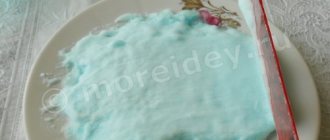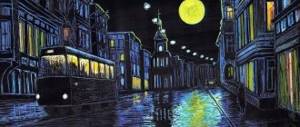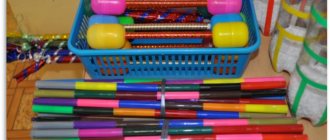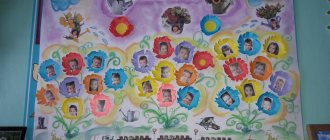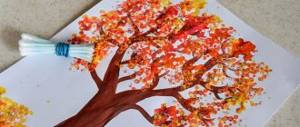Monotype drawing technique is one of the types of non-traditional creativity . It is used by both preschoolers and professional artists. Moreover, children especially love this type of art. After all, it’s easy and fun, each work is unique, and creating it is very simple. The technique does not require special skills or training, but it gives everyone the opportunity to express themselves. Monotype butterfly is an easy and beautiful drawing that will appeal to both children and adults.
What is monotype?
Monotype is a graphic drawing technique, the name of which in translation means “one print” . When working, the design is applied to a flat surface and then printed on a blank sheet. The peculiarity of the technique is the uniqueness of the resulting images. No matter how many prints are made, each new one will be unique and unique.
After the print is transferred to paper, it is supplemented with details and decorations. The resulting spot can become anything, a fish, a flower, a cloud, a butterfly wing or a ballerina’s tutu. It all depends on what details to supplement it with. The artist is limited only by his imagination.
This technique is very popular with young children; it does not require preparation and perfectly develops imagination and spatial thinking. There is also a wide choice of paints: watercolor, gouache, acrylic, oil or finger paints.
By the way, the latter are completely harmless and can be used even by children under two years of age. Important! In children's creativity, the only limitation is safety. Children should never use toxic paints or harmful solvents!
Monotype techniques
Drawing using the method in question has a long history. During this time, several different working techniques emerged.
Subject monotype
The simplest technique can be used as follows:
- The drawing is done on a sheet of paper.
- It is folded in half, forming a fold line.
- On one of the halves, paint half of a simple object, for example, a cube.
- The paper is then folded, creating a complete picture.
Landscape monotype
Older kids can create landscapes. In this case, they draw part of the image on half of the paper, fold it and get the full picture. Thus, in particular, it is convenient to draw a forest on the shore of a lake and its reflection in the water.
Winter landscape
Other monotype techniques
To perform the next technique, you must already have basic skills. In this case, a plastic sheet is used. Dark paint is applied to it. While it retains its moisture, the child moves a cotton swab over it. Then they apply a sheet of paper and get a picture drawn with light paint on a dark background.
Baby learns a new drawing technique
Another technique can be used when the drawing is made by applying dark paint to a light surface with a brush.
On a note! Another subject technique can be used. In this case, the sheet of paper is crumpled before drawing on it. As a result, new features will be added to the resulting print, allowing you to see the image with more texture.
Non-traditional drawing technique for the middle group of kindergarten
There is a non-standard use of this technique. Here the presentation is created in two stages:
- First, make a background image on a piece of paper.
- After the paint has dried, the child completes the drawing on it.
The work is done this way:
- You need to prepare a bowl of water, linseed oil, oil paint, a solvent for it and a brush that will be used for stirring. You need containers in which to mix the paint.
- For each desired color, this procedure is carried out separately. A little paint is poured into the jar, solvent and linseed oil are added. Then this mixture must be thoroughly stirred.
- The mixture is poured from the jars into a bowl of water. Linseed oil allows paints to float
- Use a brush to gently mix the liquid.
- Then a sheet of paper is placed under water and slowly raised. The paint drips off it, leaving beautiful and unexpected shapes.
- Then you need to wait until the paper dries.
On a note! Multi-colored stains will be visible on the sheet, which form unusual patterns or fantastic figures.
The child can modify the drawing at his own discretion.
The benefits of monotype for children
Monotype drawing technique is very simple, children can easily master it. At the same time, it develops color perception and imagination very well.
Everyone knows that little children love to get dirty. They often enjoy smearing themselves and everything around them. Everything is included: plasticine, paints, jam, etc. This process brings them incredible joy, develops their imagination, and calms them down. The child relaxes and gets a feeling of security. And this, in turn, helps to reveal talents and best qualities.
Why not use this baby's inclination in a creative way? Monotype is exactly the type of creativity that will help with this.
What does your child get in class:
- Development of imagination and creativity.
- Relieving emotional tension and stress.
- Joy and pleasure.
- Cancellation of fears and anxieties.
- Development of fine motor skills.
Monotype is actively used in art therapy when working with children of preschool and primary school age.
We also recommend you interesting articles: Isotherapy - healing through creativity Children's sand therapy: program and technique, as well as fairy tales on sand sand therapy practice
Drawing using the monotype method in kindergarten
Important! When using monotypic drawing, children produce drawings, each of which is unique.
These lessons can be included in the educational plan or organized as a circle.
You can start classes in kindergarten using the monotype drawing technique as early as the second junior group. At this age, children are asked to depict simple and well-known objects. Here are a few such examples:
- air balloons;
- cubes;
- fish;
- checkboxes.
Usually kids are asked to use a sheet of paper folded in half. First, make the design on one side, then fold it in half. The drawn image is printed on the other side.
On a note! Sometimes the design is applied so that it touches the fold line. After folding the page, a symmetrical image is obtained.
If it is difficult for a child to make a drawing, you can prepare a template for this.
Bouquet of flowers
At an older age, children are asked to draw more complex drawings. For creativity, watercolors or gouache are used. The first of them should not be diluted too much. In some preschool educational institutions, drawing classes are conducted using acrylic paints. However, in this case, you need to take into account that they dry quickly and cannot be washed off if you want to correct the drawing.
Pedagogical communication is a form of organizing communication between the teacher and children
To conduct classes in kindergarten on creating images, you can use the following materials:
- sheets of thick paper or thick glossy paper;
- when teaching preschool children, you can use film;
- A plastic board is suitable for drawing;
- glass;
- You can use tiles.
Other options for performing the work are also possible.
How is the monotype butterfly lesson going, what is required?
Before you begin, you should definitely show your child the principles of this technique.
As an example, the teacher makes a demonstrative drawing and explains it to the child using an example. How is the work going? After which you should allow the child to immerse himself in the creative process and do everything at his own discretion. Attention! Drawing using the monotype technique has no strict boundaries or limitations.
You should not interfere in the process when it is not necessary. What you will need for work:
- Landscape paper or whatman paper
- As additional materials, you can use any smooth surfaces: cardboard, drawing board, glass, plastic, dry tree leaves
What paints are used:
- Gouache
- Oily
- Acrylic
- Finger
Suitable brushes:
- Cotton buds
- Brushes
- Sponges
- Hard paint brushes
- Own fingers.
The drawing can also be decorated with decorative elements. For decoration use:
- Sequins
- Glitter (multi-colored sparkles)
- Small rhinestones and beads
- Bright stickers
- Glitter pens (multi-colored gel pens with added sparkles)
You will also need PVA glue and a glass of water.
Reference. acrylic paint is best It is the brightest and does not lose color properties when creating prints. Gouache paints are also suitable; this is a less expensive option.
Monotype. Master class with step-by-step photos
Master class on unconventional drawing using the “Monotype” technique
Art - therapy or drawing with the mood
Author: Voronkina Lyudmila Artemyevna, teacher of additional education MBOUDOD DTDM g.o. Tolyatti
Topic: Unconventional drawing using the “Monotype” technique. Composition “Mountain Landscape”. This master class is intended for teachers, parents, children from five years of age. Purpose: - creating the composition “Mountain Landscape” using an unconventional drawing technique. "Monotype". - get great pleasure from the drawing process itself. Objectives: — Broadening one’s horizons by gaining theoretical knowledge about a new drawing technique. — Acquaintance with the technique of making monotypes — Development of creative imagination and fantasy; — Cultivation of diligence, perseverance, accuracy. Purpose: the composition can be used to decorate the interior, as a gift.
Progress of the lesson:
Dear colleagues.
I offer you an activity that will relieve fatigue, improve your mood, self-esteem, and each of you will feel like an artist. I will use the art therapy method. Art therapy classes are artistic treatment with creativity. It mainly involves non-verbal methods of communication and self-expression, and is used in many areas of psychotherapy, business, social work, and pedagogy. Drawing is the most popular art therapy method. Freeform, thematic, plot, chaotic, coloring... We are not talking about skill and talent in art therapy. The main thing is to get great pleasure from the drawing process itself. Anyone can engage in art therapy, because each of us has a creative beginning, which sometimes we so diligently destroy and hide even from ourselves, and drawing lessons will help us discover it. In the combination of colors, mixing paints and intuitive creation of images you will find the alchemical formula for good luck! And the masterpieces painted during the lessons will become not only decorations, but also talismans for your home. Now we will play a little with paints and you will see for yourself that there is an artist in each of you; in 15 minutes we will create 2 masterpieces. And at ten years old, and at seven, and at five. All children love to draw. And everyone will boldly draw everything that interests him. Everything arouses interest: Distant space, nearby forest, Flowers, cars, fairy tales, dancing... We’ll draw everything! If only there were paints, and a sheet of paper on the table, and peace in the family and on Earth. Valentin Berestov The topic of our lesson is “Mountain Landscape” using the “Monotype” technique. Monotype is one of the amazing types of fine art. Mono means “one”, typos means “imprint”. The only print that can be made with any ink on any substrate. Monotype is a “unique print” technique in which a smooth surface or sheet of paper is coated with ink and then an imprint is made from it onto the sheet. The pioneer of this artistic method was the artist Elizaveta Kruglikova, who made etchings a hundred years ago and in a hurry made a “blot” on a printing board. She liked the effect of the printed “blot” and began using it in her works. To work we will need:
Gouache, brush No. 1, No. 3 Four sheets of thick white A4 paper Glass or ceramic tiles (a perfectly clean surface is required) A jar of clean water
Work progress
1. Place the glass on a sheet of white paper
2. Paint the mountains with dark brown paint
3. Apply ocher on top of the dark brown paint
4. Add black paint down
5. Paint the sky with white and blue gouache
6. Draw water
7. Place a sheet of white paper on the wet drawing, press the sheet with your hands
8. Carefully remove the pattern
9. Use the design on the glass a second time, adding some green paint and white to the sky
10. Spray the design with clean water and place a sheet of white paper on top
11. Carefully remove the pattern
12. Sprinkle the design on the glass with water and get a third print
Monotype printing is an excellent underpainting for mixed media work. Smooth transitions of monotype tones enhance the decorative effect . 13 The resulting images can be further developed using pastels or paints. Using a thin brush, add the necessary details.
Place dried works into frames
This is how we enjoy drawing. And you? Were you interested? As promised, in 15 minutes -2 masterpieces. I wish you success in your creative endeavors and thank you for your attention.
We recommend watching:
Unconventional drawing technique Blotography. Master class Drawing a landscape using the combined technique “wet on wet” and “dry on dry” Non-traditional methods of drawing in kindergarten for older preschoolers Drawing techniques. Blowing
Similar articles:
Drawing autumn leaves, grades 1-2
Master Class. Landscape monotype
Autumn crafts for schoolchildren. DIY autumn panel
Gallery of drawings using monotype technique
Below are drawings made using the monotype technique:
